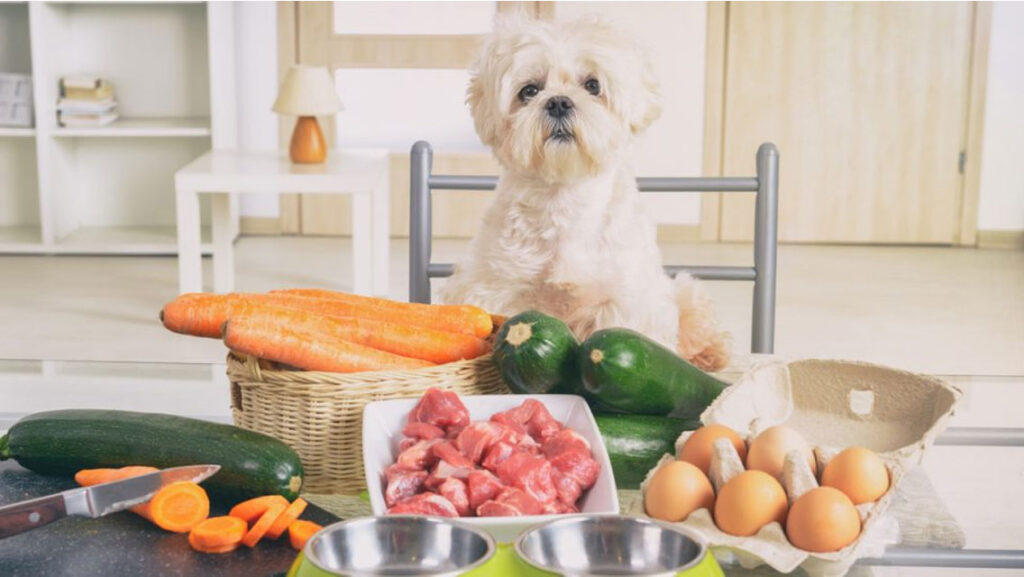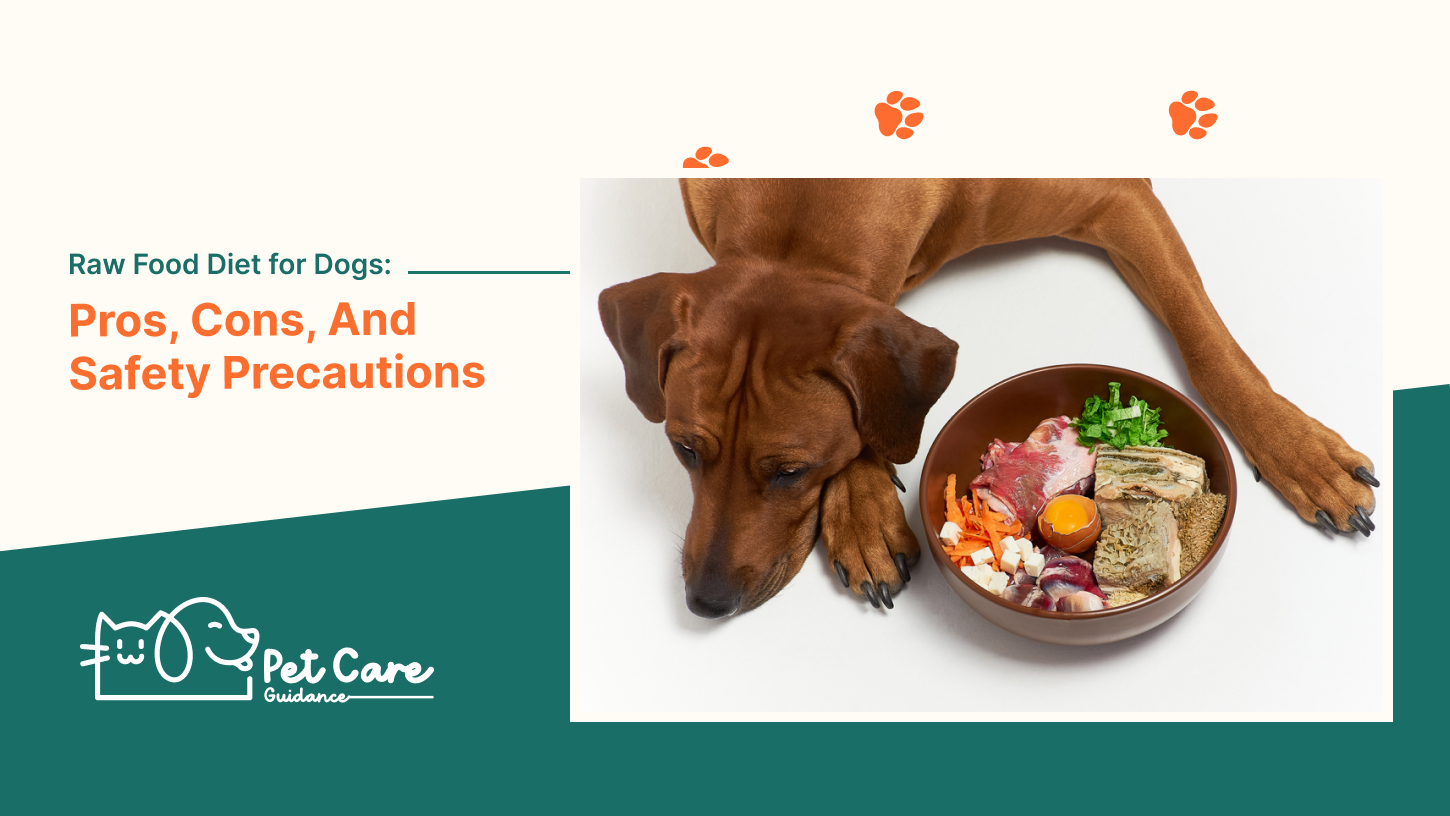A raw food diet for dogs has both pros and cons. On the positive side, it can help with weight management, promote healthier skin, and cleaner teeth, and provide a shinier coat.
However, there are safety precautions to consider, as studies have shown that raw food diets can lead to high levels of disease-causing bacteria in dogs’ saliva and feces. These bacteria include E. Coli, Salmonella, Listeria, and Campylobacter. Therefore, it’s important to be aware of the risks and take necessary precautions when feeding your dog a raw food diet.
Pros Of A Raw Food Diet For Dogs
| Weight management: |
| If your dog tends to gain weight easily, a raw diet can help keep its weight in check. |
| Health benefits: |
| A raw diet can help your dog have more energy, healthier skin, and cleaner teeth. |
| Shinier coat: |
| Dog owners who support a raw diet claim that it promotes shinier coats and healthier skin. |
Raw food diets for dogs have several benefits. Firstly, a raw diet can help with weight management, making it ideal for dogs that tend to gain weight easily. Additionally, a raw food diet provides numerous health benefits for dogs, including increased energy levels, healthier skin, and cleaner teeth. Many dog owners also claim that a raw diet promotes a shinier coat, enhancing their pet’s appearance.
However, it’s important to be aware of the potential downsides of a raw food diet, such as the risk of bones and the presence of harmful bacteria. Ensuring a balanced diet and taking appropriate safety precautions can help mitigate these risks.

Cons Of A Raw Food Diet For Dogs
| Risk of bones: One of the cons of a raw food diet for dogs is the risk of bones. Feeding dogs raw bones can lead to the possibility of choking, dental fractures, and intestinal blockages. It is important to carefully choose the appropriate bones and supervise your dog while they are consuming them. |
|
Bacteria: Another issue with a raw food diet is the presence of bacteria. Raw meat can harbor harmful bacteria such as E. coli, Salmonella, Listeria, and Campylobacter. These bacteria can cause serious health issues in both dogs and their human family members. Proper handling and hygiene practices are crucial to reduce the risk of bacterial contamination. |
|
Unbalanced diet: A raw food diet may not provide a balanced nutrition profile for dogs. It can be challenging to ensure that dogs receive all the necessary vitamins, minerals, and nutrients in the correct proportions. Consultation with a veterinarian or a professional canine nutritionist is recommended to create a well-balanced raw feeding plan that meets your dog’s dietary needs. |
Safety Precautions For A Raw Food Diet For Dogs
When it comes to a raw food diet for dogs, safety precautions must be followed to ensure the health and wellbeing of your furry friend. Proper handling and storage of raw food are crucial to minimize the risk of bacterial contamination. Raw meat can contain disease-causing bacteria such as E. coli, Salmonella, Listeria, and Campylobacter, which can be harmful to both pets and humans.
It is essential to gradually transition your dog to a raw food diet to prevent digestive issues. Start by mixing a small amount of raw food with their regular diet and gradually increase the ratio over time. This will allow their digestive system to adapt to the new diet.
Consultation with a veterinarian is recommended before starting a raw food diet for your dog. They can provide guidance on the nutritional requirements and help you create a balanced meal plan. Regular check-ups and monitoring are important to ensure your dog’s health is maintained.
Credit: experiencelife.lifetime.life
Frequently Asked Questions On Raw Food Diet For Dogs: Pros, Cons, And Safety Precautions
What Are The Downsides To A Raw Food Diet For Dogs?
Raw food diets for dogs have downsides. Studies show high levels of disease-causing bacteria like E. coli and Salmonella in raw-fed pets’ saliva and feces. There is a risk of bacterial contamination and infection, along with the potential for nutritional imbalance and digestive problems.
How Can A Raw Food Diet Benefit Dogs?
A raw food diet can provide dogs with more energy, healthier skin, and cleaner teeth. It can also help manage their weight and promote a shinier coat. However, it’s important to consider potential risks and ensure a balanced diet.
What Are The Potential Risks Of A Raw Food Diet For Dogs?
Studies have shown that pets who eat raw food may have higher levels of disease-causing bacteria in their saliva and feces, such as E. coli, Salmonella, Listeria, and Campylobacter. This can pose a risk to both the dog and their human family members.
Is A Raw Food Diet Unbalanced For Dogs?
A raw food diet can be unbalanced if not properly planned and supplemented. It’s important to ensure that dogs receive all the necessary nutrients, such as calcium, vitamins, and minerals, to maintain their health. Consulting with a veterinarian is recommended.
Conclusion
While a raw food diet for dogs may have its benefits such as weight management, healthier skin, and cleaner teeth, it is important to consider the potential risks. Studies have shown that raw food can contain bacteria that can be harmful to both pets and humans.
Additionally, there is a risk of nutritional imbalance and the potential for contamination. It is crucial to consult with a veterinarian and take necessary safety precautions before implementing a raw food diet for your furry friend.


